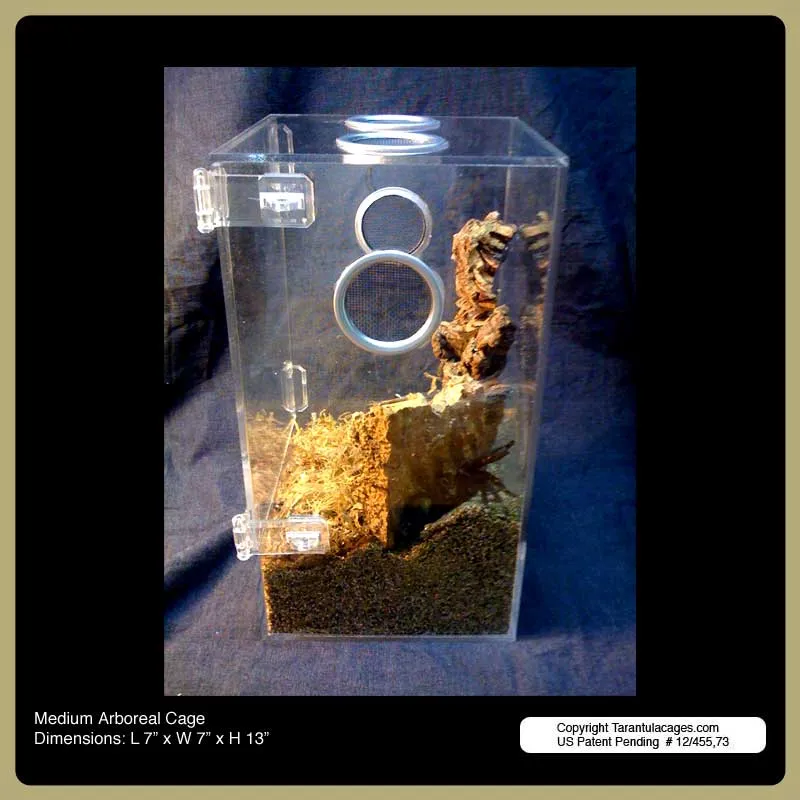The Best Tarantula Cages Canada
Choosing the right tarantula cage in Canada is a crucial step in providing a safe and comfortable environment for your pet. With a plethora of options available, from various sizes and materials to different features, selecting the perfect cage can seem daunting. This guide will delve into the top 5 features to consider when buying tarantula cages in Canada, ensuring you make an informed decision that benefits both you and your eight-legged friend. Understanding these key aspects will help you create an optimal habitat that caters to the specific needs of your tarantula, promoting its well-being and longevity. From ventilation to security, we’ll explore what makes a tarantula cage truly exceptional, helping you navigate the market with confidence. Let’s explore the best options available for tarantula cages Canada.
Ventilation Importance in Tarantula Cages
Ventilation is a critical aspect of tarantula cage design, and one that should never be overlooked. Proper airflow prevents the buildup of excessive humidity, which can lead to mold growth, bacterial infections, and ultimately, health issues for your tarantula. Good ventilation also helps to regulate the temperature within the cage, ensuring it remains within the ideal range for your tarantula’s species. When selecting a cage, look for features like strategically placed vents, mesh tops, or drilled holes that allow for adequate air circulation. Be cautious of cages that have insufficient ventilation, as these can create a stagnant environment that is detrimental to your tarantula’s health. A well-ventilated cage is a healthy cage, so always prioritize this feature. Look for cages that promote effective airflow to ensure your tarantula thrives in its Canadian home.
Airflow and Humidity
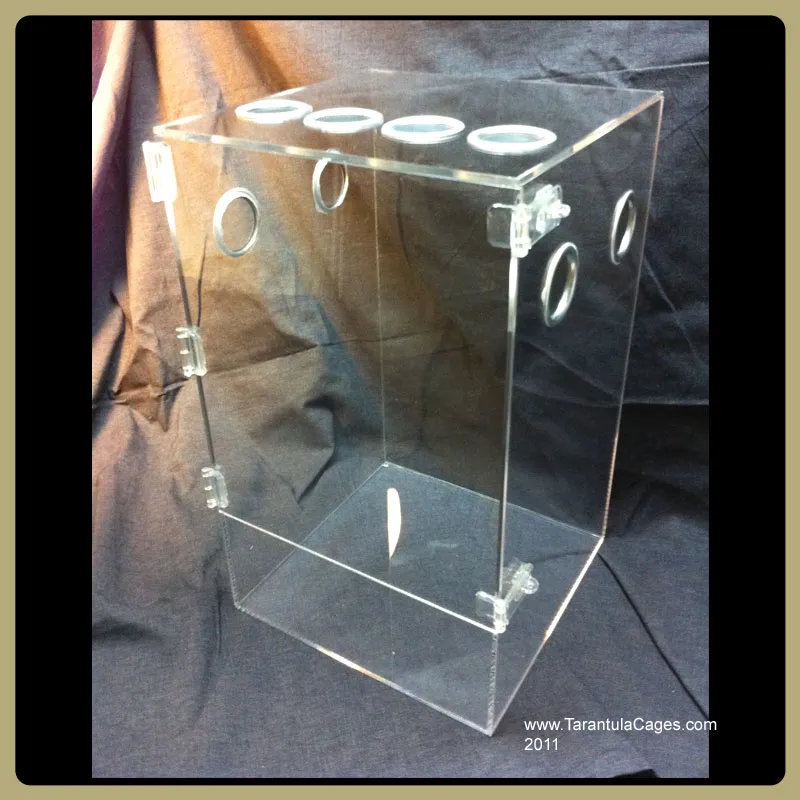
Balancing airflow with humidity is key. While good ventilation is necessary, it shouldn’t come at the expense of the humidity levels your tarantula requires. The ideal humidity range varies depending on the species, so research your tarantula’s specific needs. To maintain the correct humidity, you might need to mist the cage regularly, especially if you live in a dry climate. The substrate also plays a role in humidity regulation; materials like coconut fiber are excellent at retaining moisture. Ensure there’s a good balance between airflow and humidity to create a thriving habitat for your tarantula. Too much ventilation without proper humidification can lead to dehydration, while too little can cause respiratory problems. Always monitor the conditions inside your tarantula cage and adjust accordingly to promote optimal health.
Materials: Glass vs. Acrylic
The material of your tarantula cage significantly impacts its functionality and suitability for your pet. The two most common materials are glass and acrylic, each offering its own set of advantages and disadvantages. The choice between the two often comes down to personal preference and the specific needs of your tarantula. Both materials are suitable for housing tarantulas, but understanding their differences will help you make an informed decision. Considerations include visibility, durability, insulation, and ease of maintenance. Both materials have their pros and cons, so let’s take a closer look at each of them to determine the best fit for your tarantula cage Canada.
Advantages of Glass Cages
Glass cages are often praised for their superior visibility, allowing you to easily observe your tarantula. Glass is also a relatively scratch-resistant material, maintaining its clarity over time. It provides excellent insulation, helping to maintain stable temperature and humidity levels within the cage. Glass is generally easier to clean and disinfect, making it a hygienic choice for tarantula enclosures. However, glass cages can be heavier and more prone to breakage than acrylic, requiring careful handling. They also may not retain heat as efficiently as some acrylic alternatives. Despite these drawbacks, the clarity and ease of cleaning make glass a popular choice for many tarantula keepers in Canada.
Advantages of Acrylic Cages
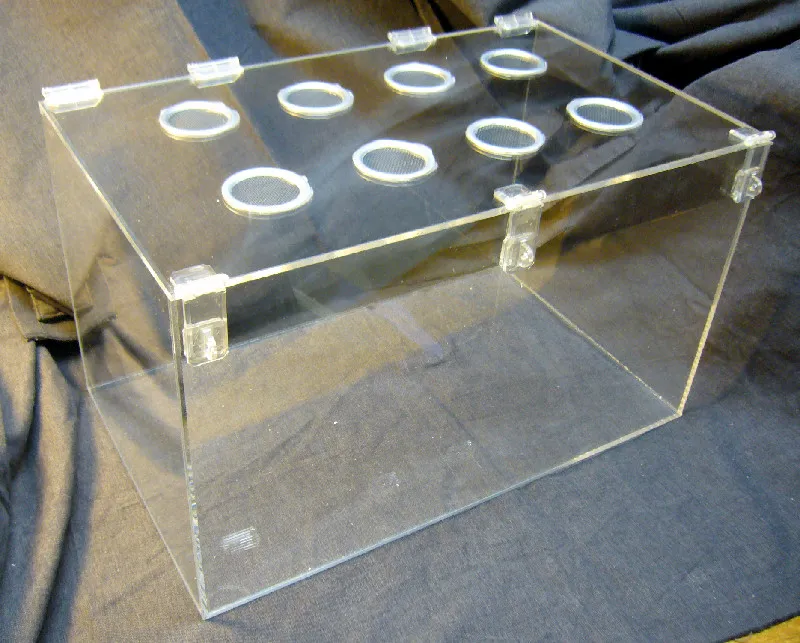
Acrylic cages are renowned for their durability and lightweight design. They are less likely to shatter than glass, making them a safer option, especially in households with children or pets. Acrylic also offers excellent insulation properties, which can help maintain a consistent temperature and humidity within the cage. Another advantage of acrylic is its versatility; it can be molded into various shapes and sizes. While acrylic may scratch more easily than glass, modern acrylic cages often come with scratch-resistant coatings. Acrylic also provides a clearer view of your tarantula than some glass options. Acrylic cages are an excellent option for tarantula keepers in Canada due to their durability, making them a practical and long-lasting choice.
Size Matters for Your Tarantula
Choosing the appropriate size cage is fundamental to your tarantula’s well-being. A cage that’s too small can restrict your tarantula’s movement and lead to stress, while a cage that’s too large can make it difficult for the tarantula to find its food. The general rule of thumb is to provide a cage that is at least twice the tarantula’s leg span in width and length. Height requirements vary depending on the species; arboreal species need more height for climbing, while terrestrial species need more floor space for roaming. Consider your tarantula’s size and growth potential when selecting a cage. Proper size also promotes a healthy environment, ensuring your tarantula can comfortably move, hunt, and thrive. Always err on the side of slightly larger, especially for juveniles who will grow.
Selecting the Right Cage Size
When selecting the right cage size, consider the adult size of your tarantula species. Research the specific needs of your tarantula to determine the ideal dimensions. For terrestrial species, prioritize floor space, while for arboreal species, height is more important. Avoid overcrowding the cage with decorations; provide ample space for your tarantula to move around and hunt. If you’re unsure, consult with experienced tarantula keepers or pet store professionals for guidance. Proper cage size is essential for your tarantula’s quality of life and overall health. A well-sized cage can prevent stress and encourage natural behaviors.
Accessibility Features
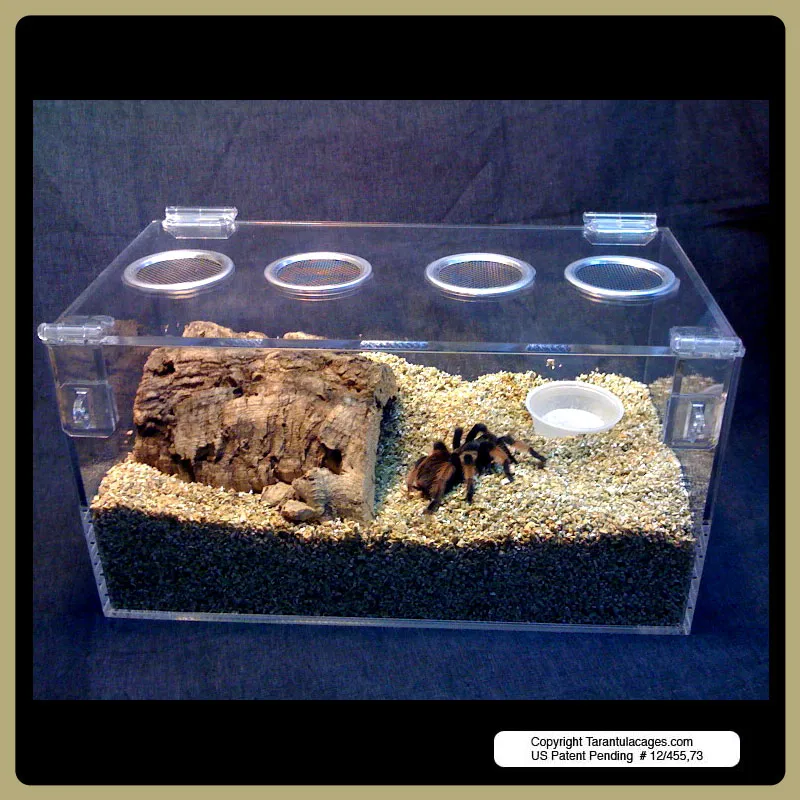
Accessibility is a crucial factor in tarantula cage design, influencing how easy it is to maintain and interact with your pet. Look for cages with convenient access points, such as front-opening doors or removable tops. These features make it easier to feed your tarantula, clean the cage, and perform necessary maintenance. Access points should be secure to prevent escapes, with sturdy latches or locking mechanisms. Good accessibility also allows you to observe your tarantula more closely without disturbing its habitat. Cages with well-designed access features make tarantula keeping a more enjoyable and less stressful experience. Prioritize ease of access when making your choice for tarantula cages Canada.
Easy to Clean Design
Maintaining a clean tarantula cage is essential for your pet’s health and well-being. Opt for cages that are easy to clean, with smooth surfaces and minimal crevices where dirt and waste can accumulate. Removable components, such as substrate trays or feeding dishes, simplify the cleaning process. Consider the material of the cage; glass and acrylic are generally easier to wipe down than other materials. A cage with a well-designed cleaning system reduces the time and effort required for maintenance, allowing you to focus on the health and happiness of your tarantula. Regular cleaning prevents the buildup of bacteria, mold, and other potential health hazards. A clean cage contributes significantly to the overall health of your tarantula, ensuring it thrives in its environment.
Secure Lids for Tarantula Safety
A secure lid is one of the most critical features of a tarantula cage, ensuring your pet remains safely contained within its enclosure. Tarantulas are skilled climbers and can sometimes escape if given the opportunity. Look for cages with lids that fit snugly and have secure locking mechanisms. Consider the type of latch or lock; choose a system that is both effective and easy to use. The lid should be made of a durable material that can withstand accidental bumps or impacts. Regular checks of the lid’s security are essential to prevent escapes, which can be stressful for both you and your tarantula. A well-secured lid provides peace of mind, knowing that your tarantula is safely contained within its habitat. Prioritize lids that are safe and secure to prevent any potential escapes, offering the best tarantula cages Canada.
Types of Lids and Latches
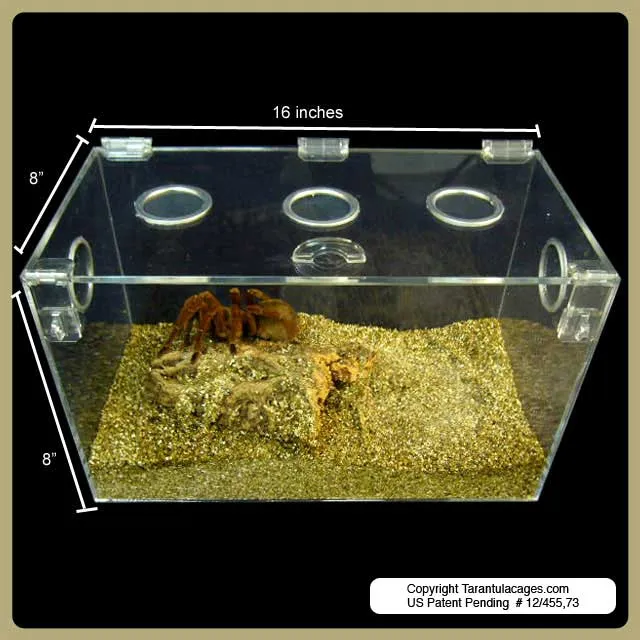
There are various types of lids and latches available, each offering different levels of security. Sliding lids with secure locks are a popular choice, as they provide easy access while minimizing the risk of escape. Hinged lids with sturdy latches are another option. Consider the accessibility and ease of use when selecting a lid type. Avoid lids that are easily dislodged or have weak locking mechanisms. Regularly inspect the lid and latches for any signs of wear or damage, replacing them promptly if necessary. Secure your tarantula’s environment by choosing the right type of lid and latch.
Decorating Your Tarantula’s Habitat
Decorating your tarantula’s habitat enhances its well-being by providing enrichment and creating a more natural environment. While tarantulas don’t require elaborate decorations, providing essential elements like substrate, hiding places, and climbing structures can significantly improve their quality of life. Choose decorations that are safe, non-toxic, and appropriate for your tarantula’s species. Naturalistic elements like cork bark, branches, and artificial plants create a stimulating environment. Be mindful of the size and placement of decorations, ensuring they don’t overcrowd the cage or obstruct ventilation. Thoughtful decoration creates a more enriching and stimulating environment for your pet, promoting its overall well-being. Design an environment for your tarantula that mimics its natural habitat as closely as possible.
Essential Substrate and Hiding Places
Substrate is a critical component of the tarantula’s habitat, providing a suitable surface for burrowing, moisture retention, and general comfort. The ideal substrate varies depending on the species, but common options include coconut fiber, peat moss, and vermiculite. Ensure the substrate is clean, non-toxic, and appropriate for the humidity and temperature requirements of your tarantula. Hiding places are equally important, as they allow your tarantula to feel secure and reduce stress. Provide a hide, such as a cork bark hide or a half log, where your tarantula can retreat. A well-decorated habitat, complete with appropriate substrate and hiding places, promotes a healthy and happy tarantula. Make sure the setup meets the specific needs of your tarantula for the best results.
Conclusion
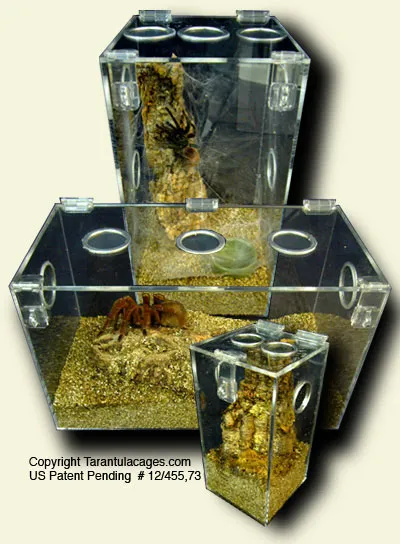
Selecting the perfect tarantula cage in Canada requires careful consideration of essential features such as ventilation, material, size, accessibility, cleaning ease, and security. By prioritizing these aspects, you can create a safe, comfortable, and enriching environment for your tarantula, ensuring its health and well-being. Remember to research the specific needs of your tarantula species and consult with experienced keepers if you have any doubts. The right cage provides not just a home, but also a thriving habitat where your tarantula can flourish. Consider these top 5 features when purchasing tarantula cages in Canada, and provide your eight-legged friend with a comfortable and safe home.
